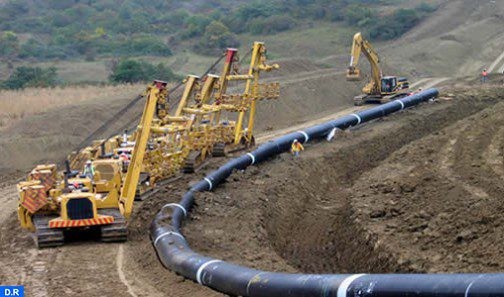Morocco is stepping on the gas—strategically and deliberately. That’s the key message from a new strategic report by BMCE Capital Global Research, released on October 9, which outlines how natural gas is poised to play a far more prominent role in Morocco’s long-term energy mix. As global energy flows shift and supply pressures mount, Morocco is ramping up investment and solidifying its ambitions for greater energy sovereignty.
The report emphasizes that natural gas isn’t just a stopgap or transitional fuel for Morocco—it’s a vital pillar in the country’s 2050 energy roadmap. Positioned as a driver of flexibility and industrial competitiveness, gas is central to plans for diversifying energy sources, strengthening energy security, stimulating key industrial sectors, and attracting large-scale investment.
At the core of this strategy lies the Nigeria-Morocco Gas Pipeline (NMGP), which BMCE Capital describes as a “continental turning point.” Designed to link thirteen African countries, the project could transport up to 30 billion cubic meters of gas annually by 2032. The Moroccan segment of the pipeline, stretching from Nador to Dakhla, officially launched in July, represents a massive infrastructure investment—over $6 billion—and is expected to create thousands of jobs in the southern regions of the country.
The pipeline’s economic impact could be substantial. According to the report, the construction phase alone could add between 0.5 and 1 percentage point to Morocco’s annual GDP growth. Once operational, the project could contribute an additional 0.2 to 0.4 points per year through transit fees and a boost to industrial activity. Cumulatively, it could generate a 5% to 8% increase in national GDP by 2040.
Alongside this flagship project, Morocco is rapidly upgrading its domestic infrastructure. The report highlights the expansion of the Tahaddart power plant, development of the Al Wahda plant, and the upcoming launch of a floating LNG terminal at Jorf Lasfar. A similar facility is also planned for the Nador West Med port. Together, these projects are building out a national logistics network tailored to meet growing domestic demand for natural gas.
While domestic gas production remains limited for now, promising signs are emerging. Projects like Tendrara and the Anchois permit are gaining momentum, hinting at untapped potential. The report also envisions the creation of a national LNG hub and long-term integration of green gases such as hydrogen and biomethane—leveraging existing infrastructure to facilitate this transition.
Of course, the path forward isn’t without hurdles. Delays in some infrastructure rollouts and the challenge of securing adequate financing remain real concerns. Still, BMCE Capital argues that Morocco is moving with purpose, blending investment with diplomatic outreach and regional cooperation. The goal is clear: to position natural gas as a long-term strategic asset—one that can power Morocco’s future, drive industrial expansion, and enhance the country’s standing in the global energy landscape.
